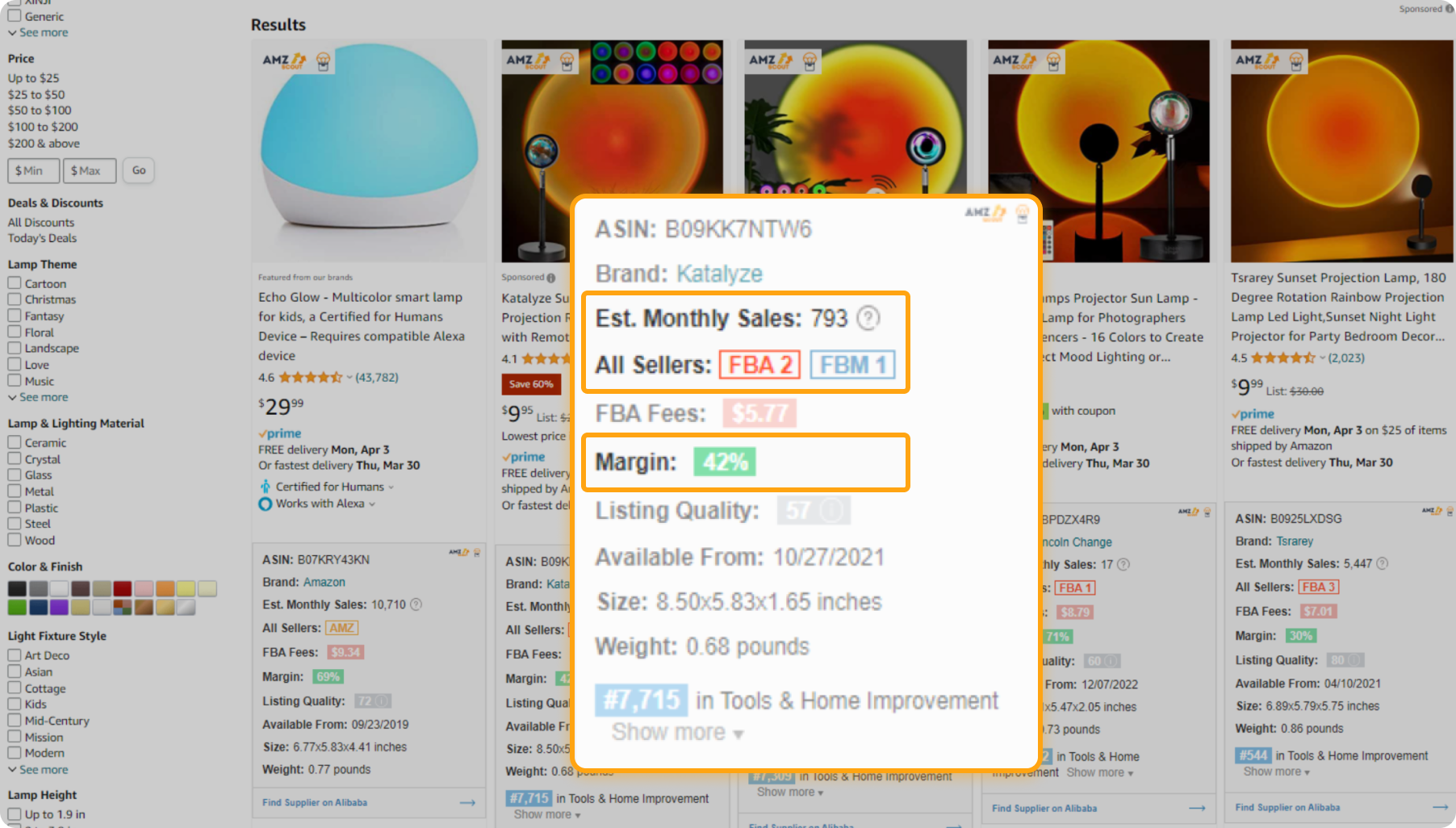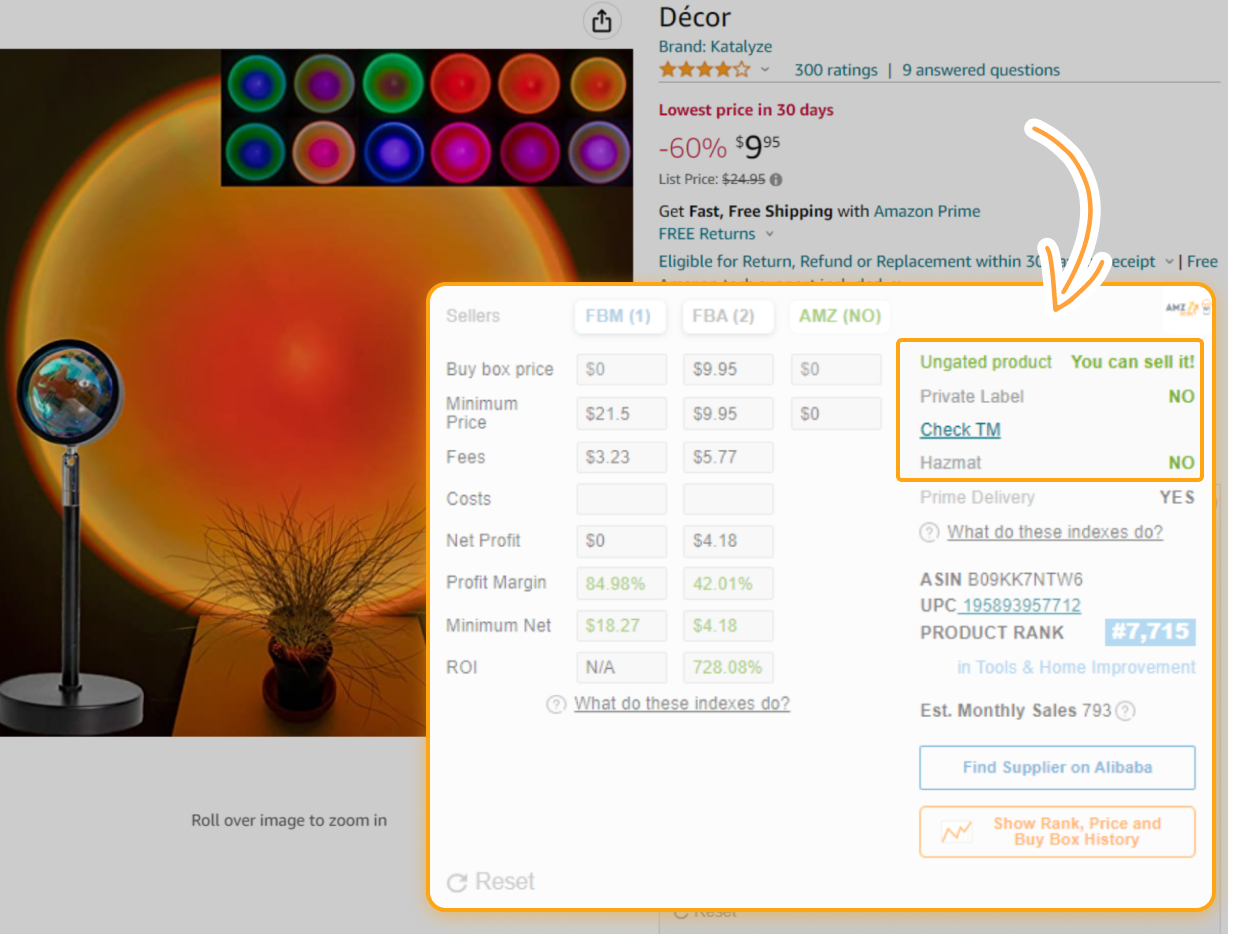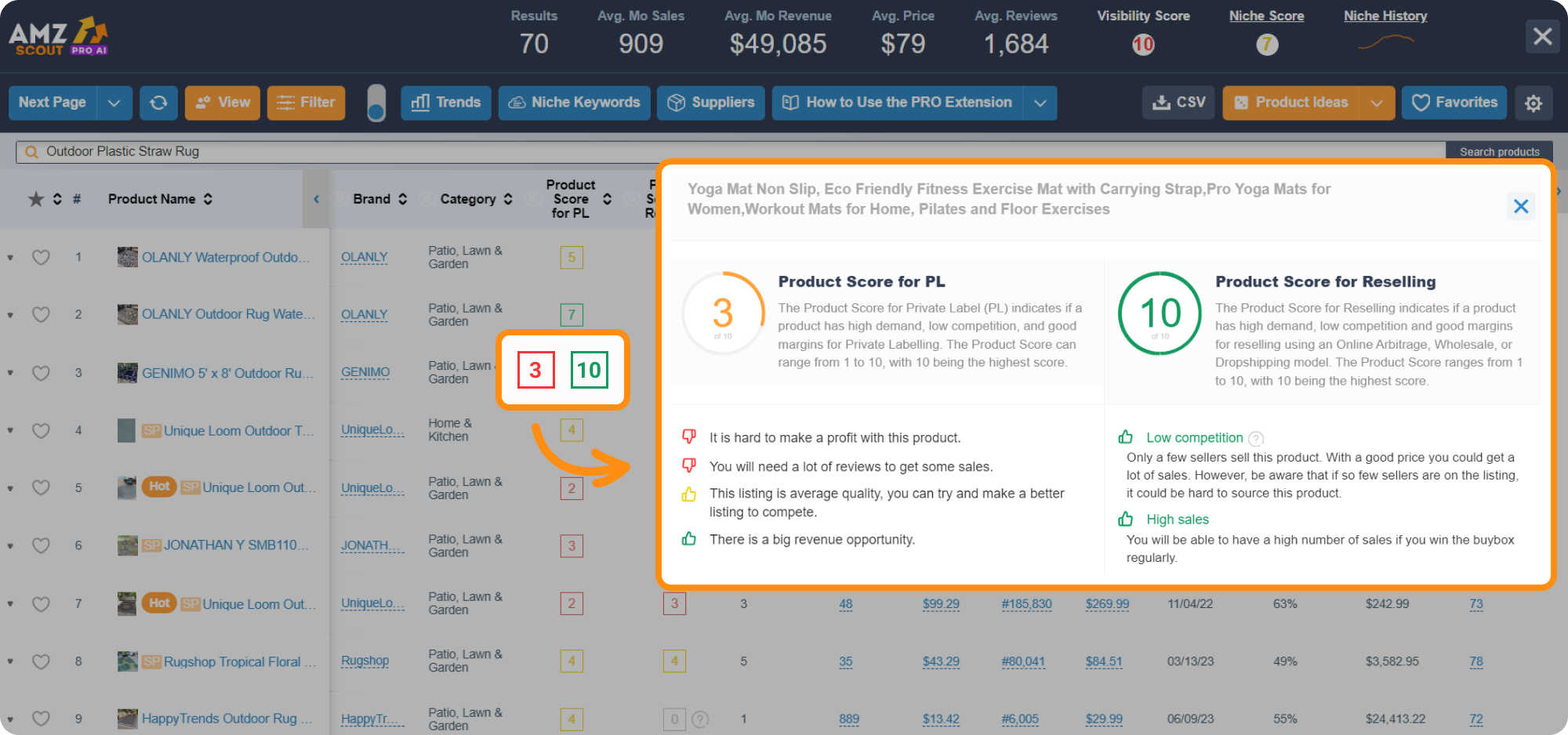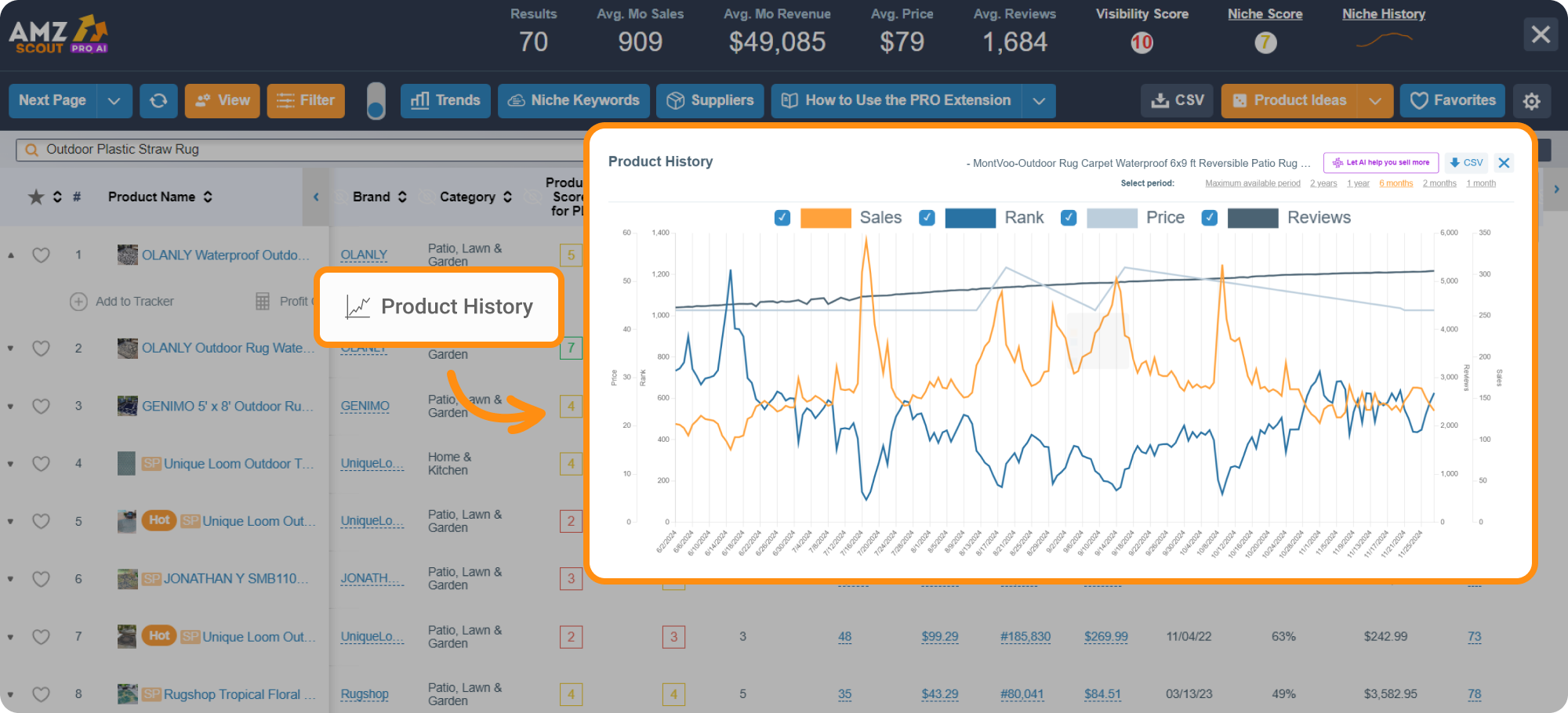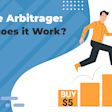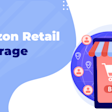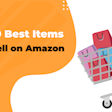
Amazon Arbitrage: How to Find Products and Sell Profitably
Amazon arbitrage is a selling method where you source products from different marketplaces to sell on Amazon. For this type of selling to work, products need to cost less at the marketplace than they do on Amazon. For example, you could find a $10 t-shirt at a local retail store that sells for $20 on Amazon. You then buy the product and sell it on Amazon, keeping the difference as profit.
Table of contents
Flipping and arbitrage are legal, as it entails purchasing items from one marketplace or retailer and selling them on Amazon for profit and can be an effective way of sourcing products, especially for beginners.
Is Amazon retail arbitrage worth it? If you don’t have a product to sell or enough capital, arbitrage is a great low-risk and effective method for Amazon sales because you can earn profits without creating your own brand or working with suppliers. Below, we will take you through a step-by-step process for how you can start using this approach for your business.
How to Start with Amazon Arbitrage
There are two arbitrage methods for sourcing products to sell on Amazon: online arbitrage and retail arbitrage. With online arbitrage, you source products from other online marketplaces such as eBay, walmart.com, or target.com. With retail arbitrage, you source products from brick and mortar retail stores.
Below, we will detail how to sell arbitrage products on Amazon:
1. Find products to arbitrage: This means analyzing demand, profitability, and the competitive landscape.
2. Source products: This is a critical part of an arbitrage business as you need the ability to procure your items for less than the current Amazon price.
3. Sell products: You need to optimize your listings for sales by setting competitive prices, offering promotions, and running paid advertisements.
Next, we will break down each of these steps in more detail.
How to Find Products to Arbitrage
The first step to selling with Amazon arbitrage is to know how to do product research. This will help ensure you source items that you can actually sell so that you don’t end up with slow-moving inventory.
1. Using the AMZScout Online Arbitrage & Dropshipping Tool for Sourcing Products
The AMZScout Online Arbitrage & Dropshipping software is a useful tool for product sourcing. You can use it to quickly find products that people want to buy. Here are the steps for how to use it:
1. Download AMZScout’s Online Arbitrage and Dropshipping Extension.
2. Start your free trial by entering your email.
3. Search Amazon for product ideas. Go to Amazon.com and look at a few different niches. They can be:
Categories that interest you.
Products and niches that are in demand on another marketplace or website.
In the search results, you’ll see boxes with extra information on each product; this information will help you find the best-performing products.
4. Look at the most profitable products. There will be another built-in panel on each Amazon product page when the extension is active. You should use the information window to see if the item is private label, ungated, or hazmat. You can read more about these three categories here.
5. Check the product’s potential profit. Enter your target sales price into the calculator to predict its profit margins. This information will help you determine whether the product is worth selling.
2. Narrowing Your Product List Using The AMZScout PRO Extension
As you discover good potential products, you’ll want to create a list of items that match your desired criteria. After that, you’ll need to narrow this list down by checking each product’s competition and profitability. You can check this information using the proven AMZScout PRO AI Extension. Here’s how you use this second tool:
1. Download the AMZScout PRO AI Extension.
2. Open the extension:
Amazon.com will open automatically after the installation, indicating that the extension is active.
If you aren’t registered, you’ll need to start a free trial by providing some basic information. Like the first tool, no payment information is needed to start the trial.
Go to the products that you found with the AMZScout’s Online Arbitrage and Dropshipping Extension.
When the results load, click the AMZScout icon in the lower-left corner of your browser to open the extension.
3. Check the product information. Start by reviewing the following factors:
The number of sellers (More than 20 sellers means there is high competition. However, two to 20 other sellers means the product is suited for arbitrage. One seller typically means it is not available for resale.)
Net margins over 50%. These products have a higher chance of profits.
Date available from. This shows when the product was first available on Amazon and can help you assess demand and competition.
Many more!
4. Check the Product Score for reselling. The Product Score weighs demand, competition, and margins to determine how easy it will be to sell a product. Look for Product Scores over seven.
5. Review the product sales performance. When you click the row for a particular product, you’ll see the link for the Product’s History. You want to check the history to see how the product’s prices and sales are trending over time.
When analyzing different products, here are the traits you want to see in a good arbitrage item.
Low competition
Knowing the competition before sourcing a product is key. You need to check both other sellers of the same product and similar options from competitors. If there are a lot of other sellers for a product, it will be hard to gain the buy box to get your offer in front of shoppers.
Few Amazon sellers
You also need to check whether Amazon sells the product itself. It’s best to avoid products with Amazon sellers as they tend to give themselves the buy box.
Unrestricted category
Amazon has both gated and ungated categories. Gated categories require approval from Amazon. Examples of restricted categories include fine jewelry, fine art, fine jewelry, watches, music & DVD, and collectibles.
Restricted categories are usually not good options for arbitrage. Arbitrage opportunities come and go, so you may miss out on your chance to profit while waiting to get ungated.
How to Source Products for Arbitrage
Once you find good arbitrage targets, you must check to see if you can source the product for a lower price than the current Amazon floor. When looking at the cost to source your products, it is important to factor in all the extra costs associated with selling on Amazon. This includes the referral fee that Amazon takes for each sale as well as the cost it takes for you to fulfill the orders.
So what is the best place to find arbitrage products? Let’s examine the different places you can go to source products for Amazon arbitrage.
1. Online marketplaces
Online marketplaces provide a convenient medium for finding arbitrage products. You can browse online markets in your home and can easily compare prices with those on Amazon. Plus, online marketplaces aren’t bound by location, meaning you can source products from Canada, the UK, or any other country. There are several global marketplaces that are able to compete with Amazon on price. This includes:
2. eBay
eBay features products from all sorts of product categories. The marketplace is competitive as there are a lot of third-party sellers. This leads to lower prices for many items as sellers look to gain an advantage.
3. Walmart
Since adding support for third-party sellers, Walmart’s online marketplace has grown to become one of the largest in the world. You can find products from a wide range of categories and there are flexible fulfillment options. Many items can be picked up in-store, allowing you to potentially take advantage of store promos.
4. AliExpress and Alibaba
AliExpress and Alibaba are two other effective online marketplaces for finding arbitrage products. AliExpress caters to consumers, while Alibaba is geared towards B2B buyers and bulk purchases. Keep in mind that if you source products from either of these markets the delivery times can be longer as many of the products ship from China.
5. Retail stores
The other place to find arbitrage products is physical retail stores. If you use retail arbitrage to source your products, you won’t find the same breadth of selection that you would when looking for products online.
However, you can still find a lot of good products, some of which you can get for a steep in-store discount. Many stores also have trade-in programs you can use to find used products at extra low prices. Used items on Amazon often face less competition and can be an effective way to get early sales.
If you have a Walmart in your area, it is often the best place to find products for retail arbitrage. The store features a massive selection of products and offers competitively low prices for most items. Target is another solid option although their prices tend to be higher than Walmart’s.
Here are some other stores you can use to find products to resell on Amazon:
Shopping malls
Dollar stores
Kohls
Marshalls
Home Depot
Lowes
Staples
How to Sell Amazon Arbitrage Products
After you source your products, you must get them listed on Amazon. The fastest way to do this is to use the ASIN from the current listing when adding the product in your seller central account.
Find the listing for the product you want to sell.
Scroll down, find the ASIN, and copy it.
Open your Seller Central account go to Inventory > Add a product.
Paste the ASIN in the search field. This will grab the product which you can continue listing by clicking Sell this product.
You can also use the Amazon Seller app to list your products by scanning the barcode.
When you create your listing, you will need to set a price for the product. Your price plays a big part in whether you win the buy box. Amazon wants to maximize the chances of converting the customer and therefore will prioritize the lowest-priced option. This doesn’t mean you should instantly jump to undercut all your competitors. You still want to make sure you earn high enough margins on your sales.
In addition to creating your product listings, you also need to determine how you will fulfill your orders. You can use Fulfilled by Amazon (FBA) to have Amazon handle order fulfillment for you, or you can choose to handle order fulfillment yourself. Another option is to dropship your products directly from the source. If you dropship, make sure to brush up on Amazon’s dropshipping policy so that you don’t run into any issues.
Once your products are live, you need to drive visitors to the listing in order to start seeing sales. If you researched a product with a manageable level of competition, you should be able to gain the buy box for organic traffic over time. If you want to get even more visitors, you can consider running an Amazon advertising campaign.
Tips for Amazon Arbitrage
Here are some helpful tips for selling arbitrage products on Amazon:
1. Pick the Right Products
The importance of finding the right product can’t be understated. AMZScout’s tools will help you find products that meet the ideal criteria for arbitrage. But, because sourcing is more tricky with arbitrage, you need to thoroughly evaluate your options before choosing to sell something.
It’s important to not only find the product on another marketplace but to also ensure that its pricing will allow you to be profitable. As such, you want to look for price shifts at the place you are sourcing the product. It’s possible to look for quick flips on discounted items but ideally, you want something that you sell for a solid period of time to build a business around. Some of the most effective arbitrage categories have been home and kitchen, toys and games, and book products.
2. Price Your Products Competitively
While arbitrage is legal on Amazon, it doesn’t come without challenges. The greatest challenge for arbitrage sellers is winning the buy box. Because you’re reselling products, you’ll always have to compete with other sellers.
The best way to get a share of the buy box is to price your products competitively. Amazon wants to give customers the best deal so having the lowest price option can help you get more exposure. Be sure to keep an eye on competitor prices so that nobody undercuts you. But, also make sure to not price your products so low that they aren’t profitable.
3. Keep Stock Available
This tip is another way you can get more buy box exposure. Amazon won’t reward the buy box when a product is out of stock. As such, you want to keep your product available at all times.
Pros and Cons of Arbitrage Method
Pros and Cons of Arbitrage MethodLike other selling methods, arbitrage has its strengths and weaknesses. Here are some of the key pros and cons you should be aware of:
Pros
In-demand products: Arbitrage products have strong demand as they generate high sales volume through multiple marketplaces.
Easy to list products: Because arbitrage products are already present on Amazon, you do not have to manage optimizing the product listing yourself.
Low startup investment: Arbitrage has minimal upfront costs. You only need to buy a few units to get started.
Low risk: Starting with little capital also means low risk as you don’t have to worry about losing a lot of money on unsold inventory.
Cons
Low margins: Because you are sourcing your products from other retailers, you do not get your inventory at favorable prices. This cuts into your overall profit margins.
Hard to scale: Arbitrage businesses can be difficult to scale. Retail marketplaces are not meant for bulk procurement, making it hard to handle a higher number of orders.
Lack of control over product: Because you’re reselling other items, you do not have direct control over the product itself.
Conclusion
It is a simple, and quick way to source products and you don’t need a comprehensive course to get started. While increased competition has made it harder to profit from arbitrage, sellers that know how to find winning products can still find success with Amazon arbitrage.
